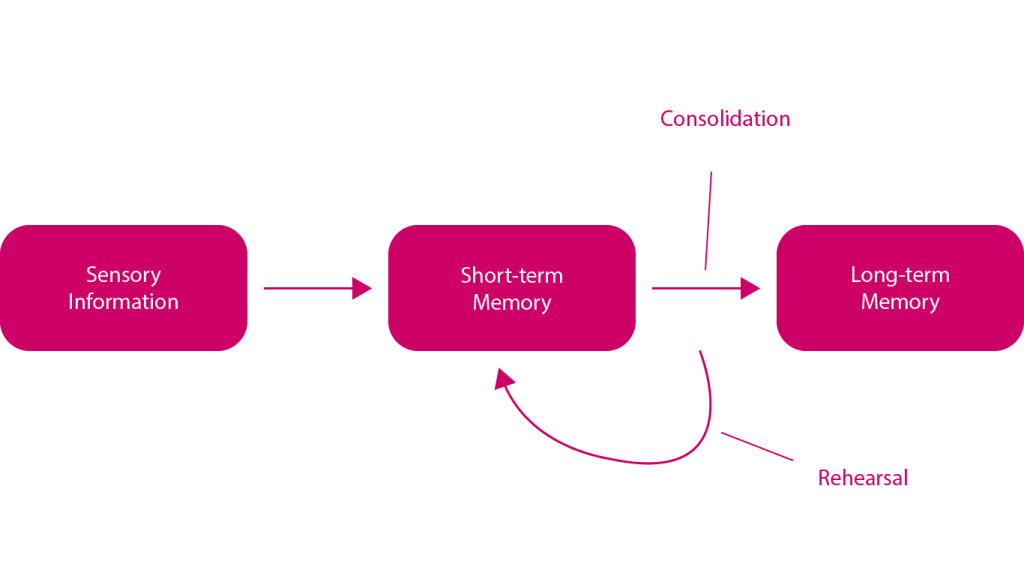Types of Memory
(based on Richard Atkinson and Richard Shiffrin theory)
- Sensory Memory
Sensory memory is the earliest stage of memory. During this stage, sensory information from the environment is stored for a very brief period of time, generally for no longer than a half-second for visual information and 3 or 4 seconds for auditory information. We attend to only certain aspects of this sensory memory, allowing some of this information to pass into the next stage: short-term memory.
- Short-Term Memory
Short-term memory, also known as active memory, is the information we are currently aware of or thinking about. While many of our short-term memories are quickly forgotten, attending to this information allows it to continue to the next stage: long-term memory. Most of the information stored in active memory will be kept for approximately 20 to 30 seconds.
The term “short-term memory” is often used interchangeably with “working memory,” which refers to the processes that are used to temporarily store, organize, and manipulate information.
- Long-Term Memory
Long-term memory refers to the continuing storage of information. This information is largely outside of our awareness but can be called into working memory to be used when needed. Some of this information is fairly easy to recall, while other memories are much more difficult to access.
